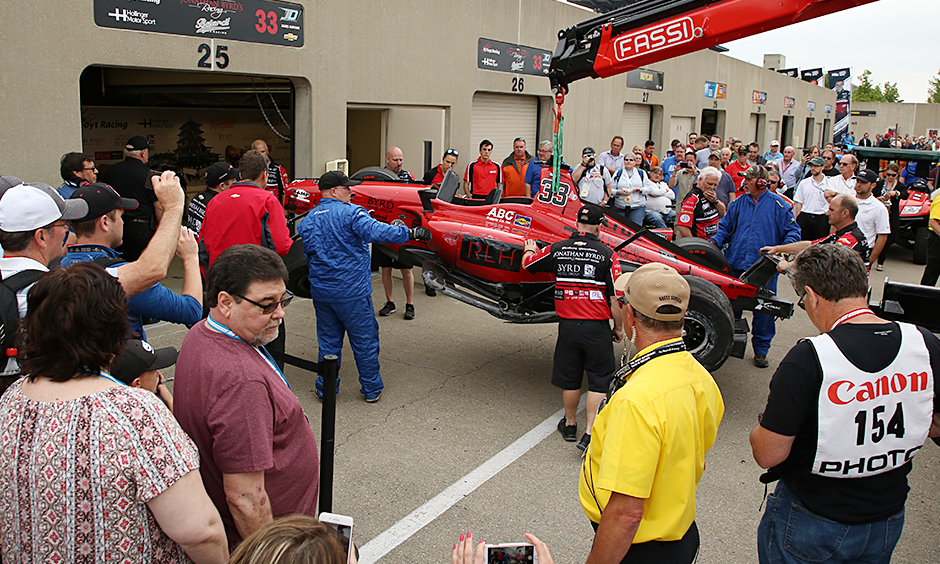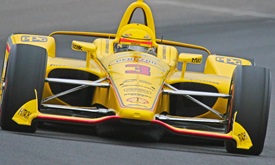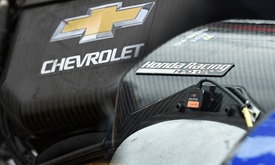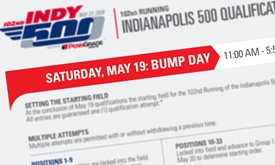Davison's crash provides proof of new car's improved impact protection
MAY 19, 2018
INDIANAPOLIS – The new bodywork on the Dallara IR-12 chassis passed another important test Friday at Indianapolis Motor Speedway in practice for the 102nd Indianapolis 500 presented by PennGrade Motor Oil.
The car performed as Verizon IndyCar Series officials expected in one of the first high-speed superspeedway oval crashes since the universal aerodynamic kit was introduced at the beginning of this season. A key component of the aero kit’s development was to include enhanced side-impact protection by extending the sidepods further forward and using radiators in the sidepods to cushion the blow.
James Davison, driving the No. 33 Jonathan Byrd’s 502 East Chevrolet, spun in Turn 2 and crashed hard into the SAFER Barrier, heavily damaging the left side of the car. The tub of the car was not harmed and the team immediately began repairs to have the car ready for qualifying. Davison was uninjured and returned to the track in the car for practice this morning ahead of the first day of time trials.
Before Davison’s car was removed from the track, INDYCAR officials – particularly Engineering and Safety Director Jeff Horton and safety consultant Dr. Terry Trammell – had already reviewed data and video of the accident. They were pleased with the outcome.
“We looked through it as soon as it happened,” Horton said. “In our first races of the year, we didn’t have any big impacts, so this was the first one. It was good to see how the car reacted.”
Davison, whose fastest lap Friday was 226.705 mph, lost control near the apex of Turn 2 and hit the SAFER Barrier with the left side of the car, testing the newly designed sidepods.
“When you change bodywork like this, you don’t always know how they’re going to crash,” Horton said. “He got all the way around sideways against the wall, and he was OK. The SAFER Barrier did its job, and it looked like the (changes) to the sidepods on this car worked.”
The car came off the barrier backward and lifted momentarily, but settled back to the track after rear flaps deployed as designed.
“The flaps did their job,” Horton said. “The car floated (in the air) a little, but he hit with a fair amount of speed and there was a lot of energy when it got around backwards. But it sat down right away, and that was good to see.
“As we do body work – the aero guys and Dallara – we now do testing to prevent some of the problems we’ve had in the past,” Horton added. “You get smarter every day, and stuff like this is a result of that smartness.”
Earlier Friday, designers of the 2018 INDYCAR aero kit were honored with the prestigious Louis Schwitzer Award for innovation and engineering excellence in racing. Tino Belli, INDYCAR’s aerodynamic development director, Andrea Toso and Antonio Montanari of Dallara and Chris Beatty, who designed the aero kit in the concept stage, received the award.



















